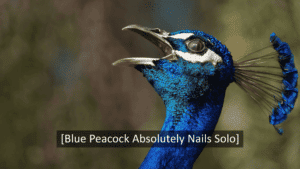
Jeep’s “2022: Earth Odyssey” commercial has made several rounds on social media, and shows how some advertisers are seeing hidden benefits of captioning. With the commercial generating more conversation about captions, it’s worth asking why captioning has become more popular (even for advertisements), how captioning works, and why [Blue Peacock Absolutely Nails Solo] isn’t a caption you’re used to coming across. It’s also not one you’re likely to see anytime soon by using an automated captioning technique.
So why has captioning become more popular? Some studies cite their wide availability as well as their use in order to silence videos when viewers are watching from a phone or tablet on the go, or being able to watch in a noisy or crowded location like a gym or bar. Some viewers report being able to better focus on plot points with captions on, others report lines being made “funnier or more relevant.” There’s also evidence that captions can help with literacy and language learning.
There’s also no denying the impact captions can have on making content more memorable. Ensuring people remember your content makes it more likely people will discuss and share it with others. This is powerful when thinking about creating buzz for television programs, but also important for marketing. Studies have shown that a combination of text and images helps people to better remember and process information by up to 650%. Making sure more people remember and share and talk about your video marketing content is objectively good business, even before considerations of how captions can help broaden marketing reach with Search Engine Optimization (SEO).
But how does captioning work? Or perhaps, more importantly, how can someone ensure they get the captions they really want from their accessibility provider (even if those captions are all animal sounds)? It all starts with the captioners.
At VITAC, training our captioners is just the beginning. In addition to being highly skilled professionals with rigorous training, our captioners also prepare for each captioning assignment according to the client’s needs and preferences. One of the ways we do this is by creating preparation materials. Treatment sheets are created for every program we caption, which list common character names, places, terms, etc., and they are continually updated with new entries by staff.
This can be especially important for programs where characters’ voices are muffled or if hosts have a particular way of exaggerating our mispronouncing words for added emphasis or effect. In those cases, the captioners refer to the treatment sheets, and any other information from the client, to ensure that viewers who are deaf or hard-of-hearing have the same experience as hearing viewers or as similar an experience as possible. This is another area where automated captioning solutions struggle to replicate the same quality as captions created by a human captioner. Automated Speech Recognition (ASR) will always try to match actual words to the sounds heard, rather than trying to capture the phonetic sounds made by the speakers. It’s why an exaggerated “eeeeew” can come out as “me you” or “you” or “EU” on ASR machines, and in addition to being wrong and completely changing the meaning, it also misses the human inflection the performer is making to emphasize a reaction.
Captioners also use their training and experience to inform how to caption sounds as well. Another reason why ASR solutions often aren’t as good is that they don’t caption sounds and the reason is in the name. ASR is specifically looking to recognize speech patterns, not car splashes or animal sounds. And even if ASR could recognize a peacock’s voice, it’s doubtful it could be taught to caption the peacock’s sounds as “nailing a solo.”
This is where captioning with a provider who will work and collaborate with you matters as well. Getting treatment sheets and program and network standards ahead of time means we can be sure to caption what clients want captioned and, forgive our language, bleep, what clients want bleeped. As a captioning provider, VITAC isn’t in the business of censoring. But VITAC does help clients to comply with Federal Communications Commission regulations about profanity on broadcast television. Our treatment sheets for programs include lists of words approved and not approved by the individual clients. This helps us to ensure content providers’ work is presented as designed.
In the end, Jeep’s “2022: Earth Odyssey” reminds us of what’s possible. Not just for their cars, but for how some advertisers are seeing hidden benefits of captioning. Captions can make even commercials and video marketing content more memorable. It’s also a good reminder of why communication with your captioning provider is essential to producing the end result you want, and why finding a provider who will collaborate with you every step of the way is more important than ever. Find out more about how we work collaboration into the way we serve every client here.
![blue peacock calling out with caption [Blue Peacock Absolutely Nails Solo]](https://vitac.com/wp-content/uploads/2022/03/blue-peacock.jpg)



